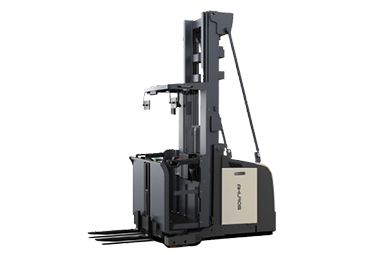Contents
Understanding Automation & AGV: A Modern Approach to Material Handling
In today’s fast-paced industrial landscape, Automation & AGV (Automated Guided Vehicles) are redefining how businesses manage internal transport, inventory movement, and warehouse operations. With the increasing demand for faster deliveries and higher operational efficiency, industries are shifting from traditional labor-intensive methods to intelligent, automated systems. This shift is driven by the pressing need to reduce errors, lower operational costs, and improve scalability across logistics and material handling automation.
Automation & AGV technologies bring precision, consistency, and round-the-clock functionality to manufacturing plants, distribution centers, and warehouses. These systems are essential components of modern logistics automation strategies, empowering companies to meet ever-changing market demands while enhancing productivity and safety in high-volume environments.

Automation & AGV
Key Components of Automated Guided Vehicles (AGVs)
At the heart of Automation & AGV systems are the intelligent machines known as Automated Guided Vehicles. These autonomous mobile robots (AMRs) or AGVs are designed to transport materials within a facility without human intervention. Powered by onboard navigation systems—such as magnetic tape, laser-guidance, or GPS—AGVs follow predetermined routes or dynamically adapt to warehouse layouts using real-time data.
AGVs typically include components such as batteries, sensors, vehicle controllers, drive mechanisms, and communication systems. Many advanced models are equipped with obstacle detection, collision avoidance, and path optimization features, ensuring safe and seamless operations in busy industrial settings.
These machines play a crucial role in warehouse automation, facilitating the movement of raw materials, finished goods, and packaging supplies, and often work alongside conveyors, robotic arms, and automated storage systems to create a fully integrated, end-to-end automated transport ecosystem.
Benefits of Implementing Automation & AGV Systems
Adopting Automation & AGV solutions brings numerous operational advantages. Firstly, they drastically reduce labor dependency, which is especially beneficial in regions facing workforce shortages or rising labor costs. AGVs work 24/7, without fatigue, delivering consistent performance and minimizing downtime.
Secondly, Automated Guided Vehicles improve accuracy and reduce material handling errors, leading to fewer product damages and better inventory control. This precision plays a crucial role in lean manufacturing and just-in-time (JIT) systems, where timely delivery of parts is critical.
Thirdly, AGVs contribute to workplace safety. Unlike forklifts driven by operators, AGVs follow strict safety protocols and include sensors that detect obstacles and avoid collisions. This helps reduce accidents and injuries on the shop floor.
Finally, AGV systems can be scaled to match production demand. Businesses can add or remove vehicles, adjust workflows, or reprogram navigation routes easily—offering a high level of flexibility for growing operations.
Applications Across Various Industries
Automation & AGV technologies are not limited to one sector; their applications span across multiple industries. In manufacturing, AGVs transport raw materials to production lines and move finished goods to storage or shipping zones. Automotive plants, for example, use automated transport systems for heavy components like engines or chassis assemblies.
In food and beverage, AGVs maintain hygiene standards by minimizing human contact and enabling clean, efficient handling of perishable goods. In healthcare, AGVs transport medications, sterile supplies, and lab specimens across hospital departments safely and efficiently.
Warehousing and distribution centers benefit tremendously from warehouse automation, with AGVs managing repetitive tasks such as pallet transportation, bin picking, and sorting. As industrial automation becomes a priority for competitive advantage, AGV deployment is becoming standard practice across sectors such as pharmaceuticals, electronics, and consumer goods.

Automation & AGV
Integration with Warehouse Management Systems
A key factor in the effectiveness of Automation & AGV technology is its integration with Warehouse Management Systems (WMS) and Enterprise Resource Planning (ERP) software. These digital platforms coordinate every aspect of inventory, from incoming shipments to outbound logistics, and AGVs serve as physical agents that execute these plans in real-time.
By syncing with a WMS, AGVs receive task instructions automatically, optimize routes, and confirm task completion, offering a level of precision that human-operated equipment can seldom match. This level of connectivity enables smarter decisions, fewer disruptions, and real-time visibility across the warehouse floor.
Moreover, data collected by AGVs—including performance analytics, battery usage, and maintenance records—feeds back into the WMS or Manufacturing Execution System (MES), enabling predictive maintenance and better overall equipment effectiveness (OEE) tracking.
Safety and Security Features of AGVs
When discussing Automation & AGV, safety is a top concern. Modern AGV systems come with built-in safety features that make them ideal for operating in environments shared with human workers. These include laser scanners, ultrasonic sensors, emergency stop buttons, bumpers, and visual/auditory alerts.
Additionally, AGVs follow set traffic rules and speed limits, and many models can even communicate with doors, elevators, and fire control systems to ensure secure movement throughout a facility. Cybersecurity is also a growing priority, with encrypted communications and secure access controls protecting the AGV network from unauthorized interference.
The safety protocols embedded in Automated Guided Vehicles support compliance with industry standards and help foster a culture of smart logistics, where both people and machines operate harmoniously to achieve optimal results.
Maintenance and Management of AGV Systems
While AGVs offer tremendous reliability, regular maintenance is essential to keep systems running at peak performance. Maintenance tasks typically include battery checks, sensor calibration, wheel alignment, and software updates. Most Automation & AGV providers offer diagnostic tools that alert operators when preventive maintenance is needed.
Fleet management software is also an essential component of AGV systems, helping warehouse managers oversee multiple vehicles, schedule tasks, and monitor system health in real-time. Advanced systems even support remote troubleshooting and updates via cloud connectivity.
Implementing a structured maintenance schedule ensures longer lifespan, reduced unplanned downtime, and continued integration with other industrial automation processes. Properly managed, AGVs can deliver consistent value for many years, with a strong return on investment.
The Future of Automation & AGV in Logistics
The future of Automation & AGV is marked by increasing sophistication, greater flexibility, and deeper integration with AI-driven logistics platforms. Next-generation AGVs are evolving into Autonomous Mobile Robots (AMRs), which use machine learning and vision-based navigation to operate in dynamic environments without fixed routes.
Advancements in 5G, IoT, and edge computing are enabling real-time data processing and enhanced vehicle-to-vehicle (V2V) communication. These innovations will make automated transport even faster, safer, and more adaptable to changing business needs.
As sustainability becomes a key focus, future AGVs will be more energy-efficient and constructed with eco-friendly materials. Governments and industries alike are promoting smart logistics strategies that support carbon reduction, and Automation & AGV technologies will be central to achieving these goals.
The rapid adoption of robotics, AI, and cloud platforms will blur the lines between physical and digital supply chains, resulting in fully autonomous ecosystems where human oversight focuses on strategic management rather than manual execution.

Automation & AGV
In a world where speed, precision, and adaptability determine success, Automation & AGV systems offer a powerful way to transform material handling automation and redefine modern logistics solutions. By replacing manual tasks with intelligent machines, businesses gain the ability to scale efficiently, operate safely, and meet customer demands with speed and accuracy.
From automated guided vehicles to integrated warehouse systems, Automation & AGV technologies are no longer futuristic—they are a present-day necessity. Their flexibility, safety, and cost-efficiency make them an ideal choice for industries ranging from manufacturing to healthcare.
As industrial automation continues to evolve, businesses that embrace Automation & AGV will not only improve their internal operations but also strengthen their competitive advantage in a rapidly digitizing supply chain landscape. Now is the time to invest in automation-driven growth, ensuring your business is ready for the next era of smart logistics.For example: “Want to learn more about Automation & AGV procurement information? Contact us now to get a quote!”
Previous News
Revolutionizing Warehouse Operations: The Power...Next News
Maximizing Forklift Performance and Safety with...Share:




